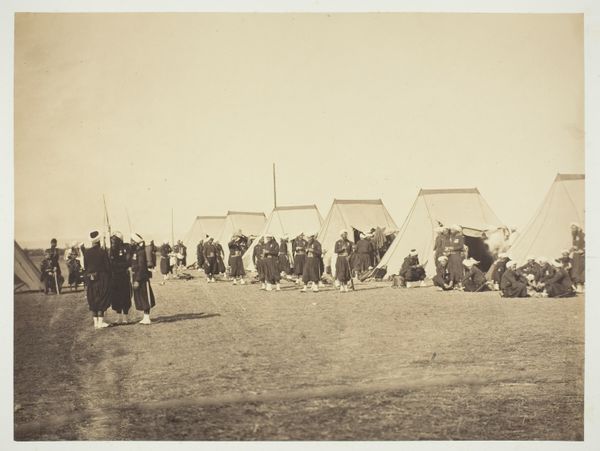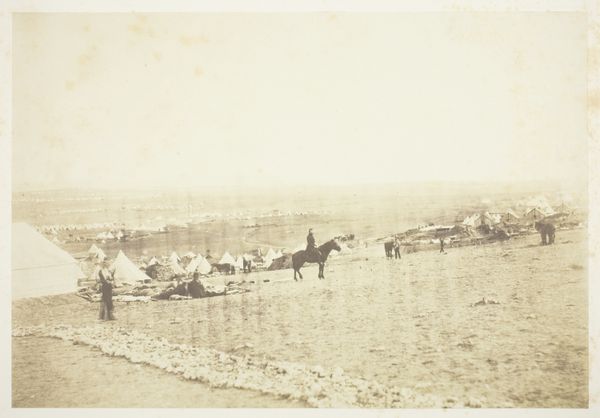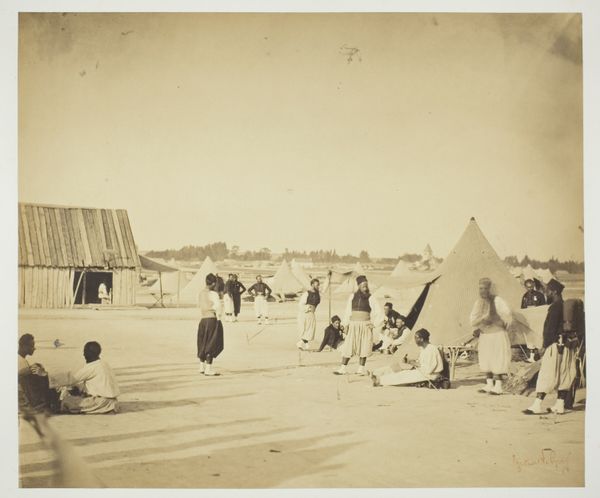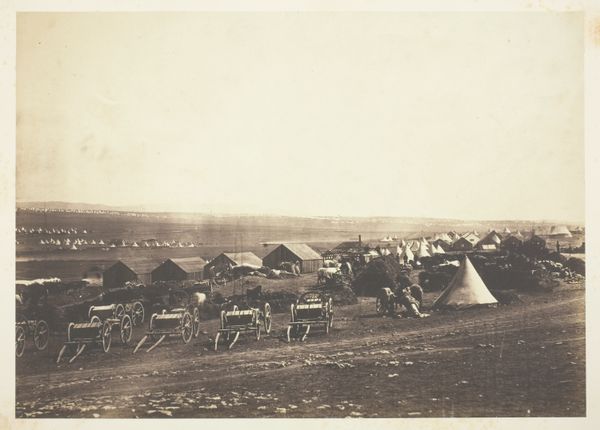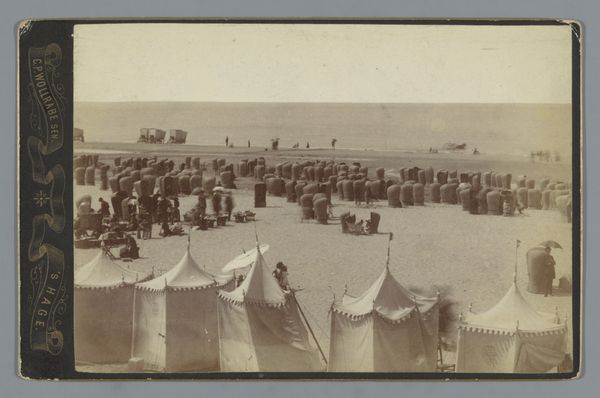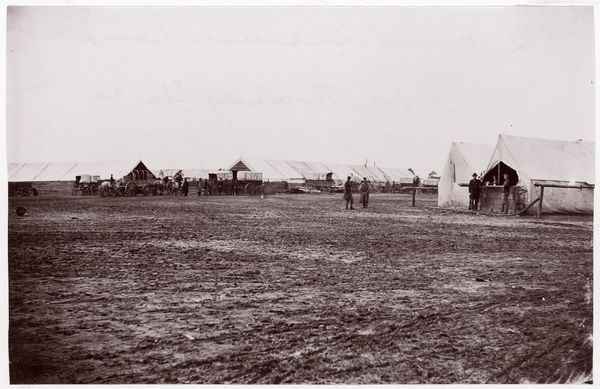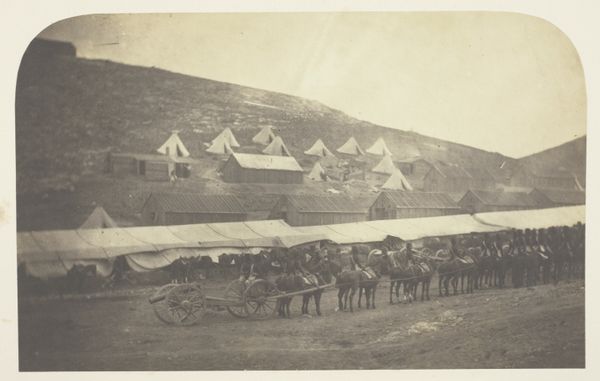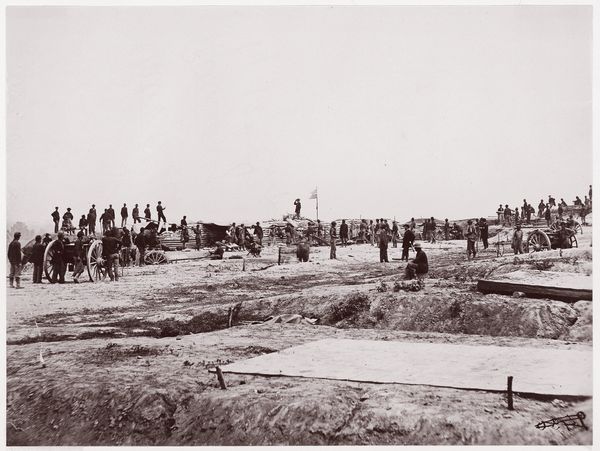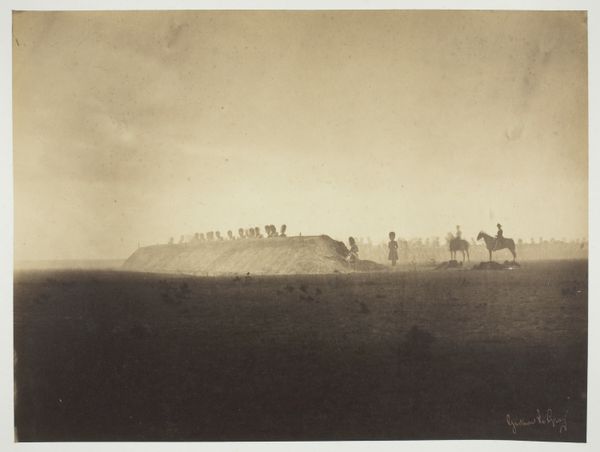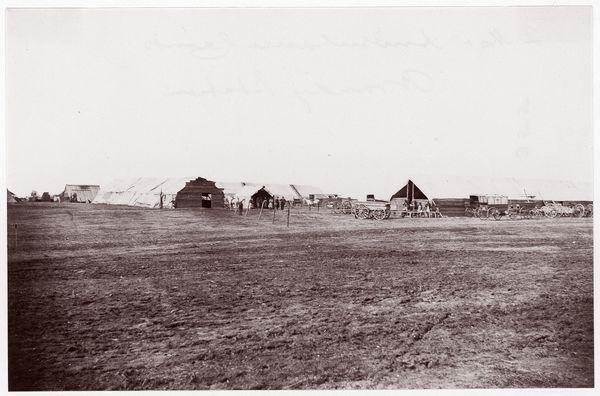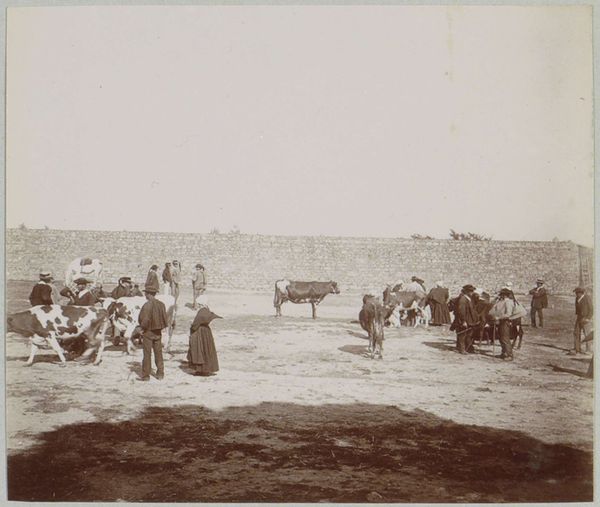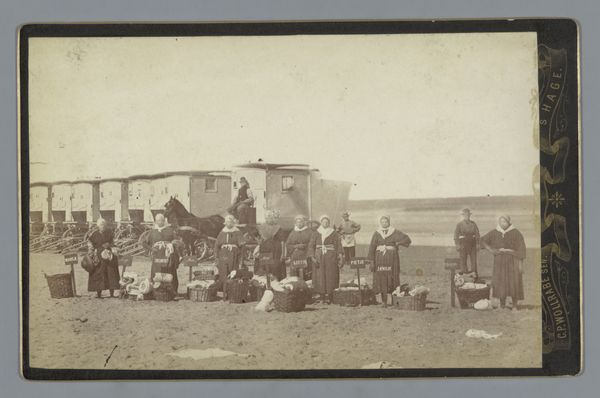
Dimensions: 27.1 × 36.2 cm (image/paper); 52.8 × 63.8 cm (album page)
Copyright: Public Domain
Curator: Let's turn our attention to this albumen print by Gustave Le Gray, taken in 1857. It's titled "Artillery Encampment, Camp de Châlons." Editor: My goodness, that’s a lot of tents! It almost feels like looking at a photograph of a rather orderly cloud formation... but earthbound, and with cannons. The sepia tones really enhance that feeling of a bygone era. Curator: Indeed. Le Gray was commissioned to document this military training camp. It's fascinating to see how photography was being used for both documentation and perhaps, even propaganda. Notice how he arranges the figures. Editor: I do! They’re so stiff, arranged like a regiment of salt and pepper shakers. And there’s that tension between the seeming candidness of the photograph—they're just hanging about!—and the highly posed nature of it all. Do you think they knew what to do with themselves? Curator: Probably not. Remember, early photography required long exposure times. People had to stay incredibly still. But that rigidity is what speaks volumes about the social and political climate. The mid-19th century was all about order, control and Empire-building. Editor: You’re right, the lack of spontaneity emphasizes the imposing scale of military power and that yearning for order and precision of Romanticism… Still, there's something appealing in the everyday life hinted at here—almost a glimpse into lives usually confined to grand historical narratives. Curator: Precisely. And Le Gray, ever the artist, manages to elevate a somewhat mundane scene into something almost heroic. Editor: I wonder if those soldiers had any idea that their casual encampment would one day hang in The Art Institute of Chicago. Funny to think of someone studying a photo of them lazing about some odd 150 years later. Curator: Art has a way of doing that, doesn't it? Freezing moments in time and turning the ordinary into the extraordinary for future reflection. Editor: A kind of beautiful ambush in retrospect, transforming military rest stops into dreamy landscapes in our imagination. Thank you, Gustave!
Comments
No comments
Be the first to comment and join the conversation on the ultimate creative platform.
